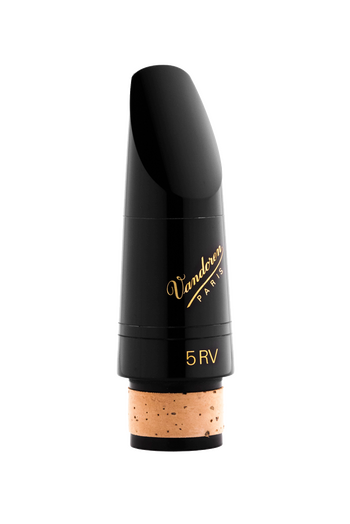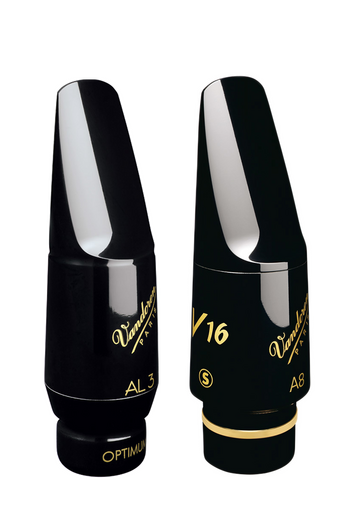Beginner Saxophone and Clarinet Equipment Questions Solved
with Shawn Maxwell
Date Posted: May 19, 2016

When do you know that a student should consider a new mouthpiece?
Shawn Maxwell: Well, if they aren’t getting a full or clear sound with good response and comfortable playability throughout the full range of their instrument, it’s time…
I think most students outgrow their mouthpiece. Depending on how long they’ve been playing, it usually happens sometime in junior high, maybe early high school. You can always hear that saxophone/clarinet player who is attempting more advanced things on a stock mouthpiece… and that stock mouthpiece doesn’t cut it.
What are some mouthpiece combinations that work well with beginners?
SM: For saxophone, a school I teach at (which started 13 beginner saxophones this year) uses traditional 2 ½ Vandoren reeds and just recently switched to Optimum mouthpieces. We haven’t gone with this set up for very long but I’m a big fan of the Optimums and already it’s a huge step in the right direction from the dreaded stock mouthpieces. Just like the clarinets, the set up not only gets a better sound but it’s easier for the students – no more struggling with equipment. Now we just work on concepts and fixing the things that need to be fixed.

Recommendations for beginner clarinetists?
SM: I am the woodwind consultant for a large school in Oswego that starts all of their beginner clarinets on 5RV Lyres & 2 ½ traditional Vandoren reeds. (I believe they started 50 beginner clarinets alone last year). I can’t stress how much of a huge impact this makes right away. Of course they are still beginners, and those beginner problems are going to be there, but they grow into a solid sound very quickly. I haven’t seen this kind of growth in the past when using stock mouthpieces and other brands of reeds.
If a student finds him or herself testing mouthpieces alone, do you have any advice for them?
SM: I’d say it’s always best for parents and students to seek out some kind of help and guidance, but if that’s not available:
- Start with the current mouthpiece and pick a few easy and slow exercises.
- Remember to play the exact same thing on all mouthpieces
- With the current mouthpiece, do a scale or something that you are comfortable with, very slowly.
Questions to ask yourself:
- How does it feel?
- Is it easy to play?
- Does it require a little more air or is it too much air?
- Are very low and very high notes easy to play? (Most will find with a step-up mouthpiece, these are mucheasier to play)
- Do the same on a new mouthpiece.
- Compare (multiple times if necessary) results of sound & playability between the two.
Important: Sometimes newer mouthpieces may be better than what you currently own but it takes time to get used to it. So the more you can play on it and compare, the better chance you have of seeing if it is the mouthpiece for you. When it’s all said and done, if it doesn’t sound better and feel good, it probably isn’t the correct mouthpiece for you.

How do you choose mouthpieces for instruments within a particular family of instruments?
SM: I think there always needs to be some experimenting before making a decision. It’s best to find a mouthpiece that you like and trust on your main instrument before shopping around for a mouthpiece for another saxophone and/or double instrument. Once you have this then yes, start with something that is close in measurement and go from there. My tenor & alto mouthpieces are pretty much the same measurements, although I did do a bunch of experimenting with others before coming to this decision. (Everyone is different so you should always try out a few different set ups just to make sure). The only difference in each set up, for me, is I use a lighter reed on the tenor.
For saxophonists doubling on clarinet, most find that clarinet mouthpieces are more resistant than the one they use on saxophone; something in the B45 family usually works best for them. I play on a Vandoren B45 13 series which, in my opinion, is close enough to my alto sax set up yet different enough to make me sound like a clarinetist and not a “doubler.”
What are the key differences for saxophonists in jazz and classical mouthpieces?
SM: I would say the big two factors would be sound and playability. I like my jazz sound to be brighter and have the mouthpiece free blowing, while my classical set up has a much darker sound and a bit more resistance. I play on a V16 jazz mouthpiece that is a little more open, has a bigger chamber and has thinner rails. When I do play classical, I’m using an Optimum mouthpiece, which isn’t as open, has a much smaller chamber and has thicker rails. These few differences greatly affect how the reed vibrates and the overall character of the tone.
Vandoren Artist-Clinicians
The goal for the Vandoren Artist-Clinician program is to enhance the quality of the music experience through education and the assistance of Vandoren. These highly trained professional educators and performers will engage your students through educational and fun sessions.
View More